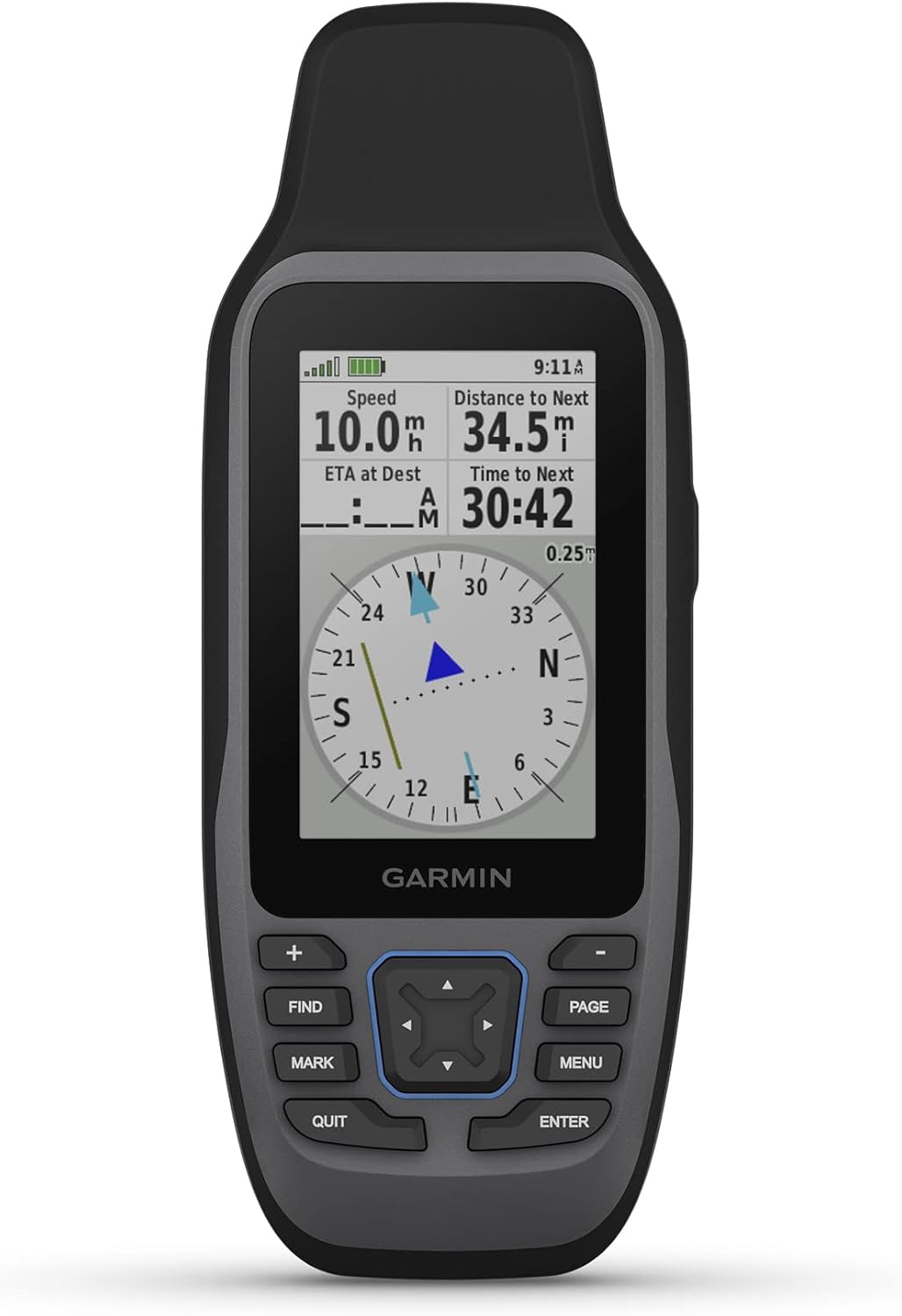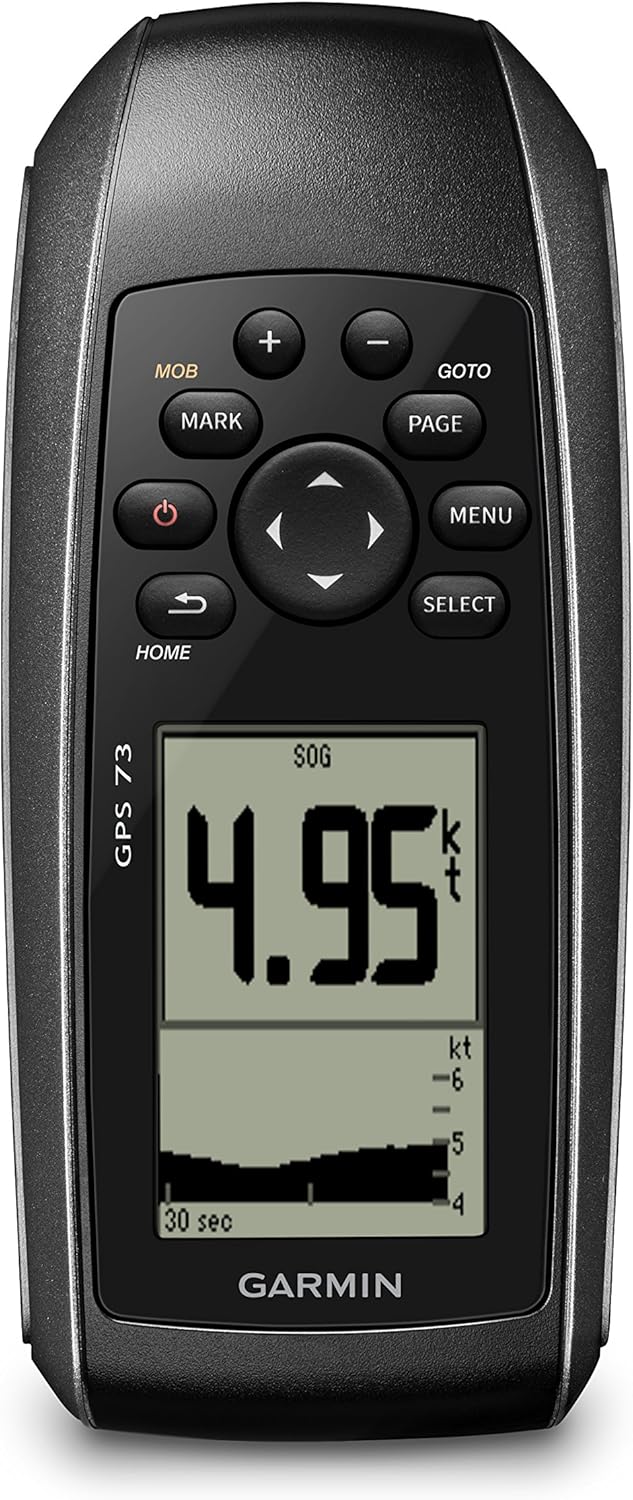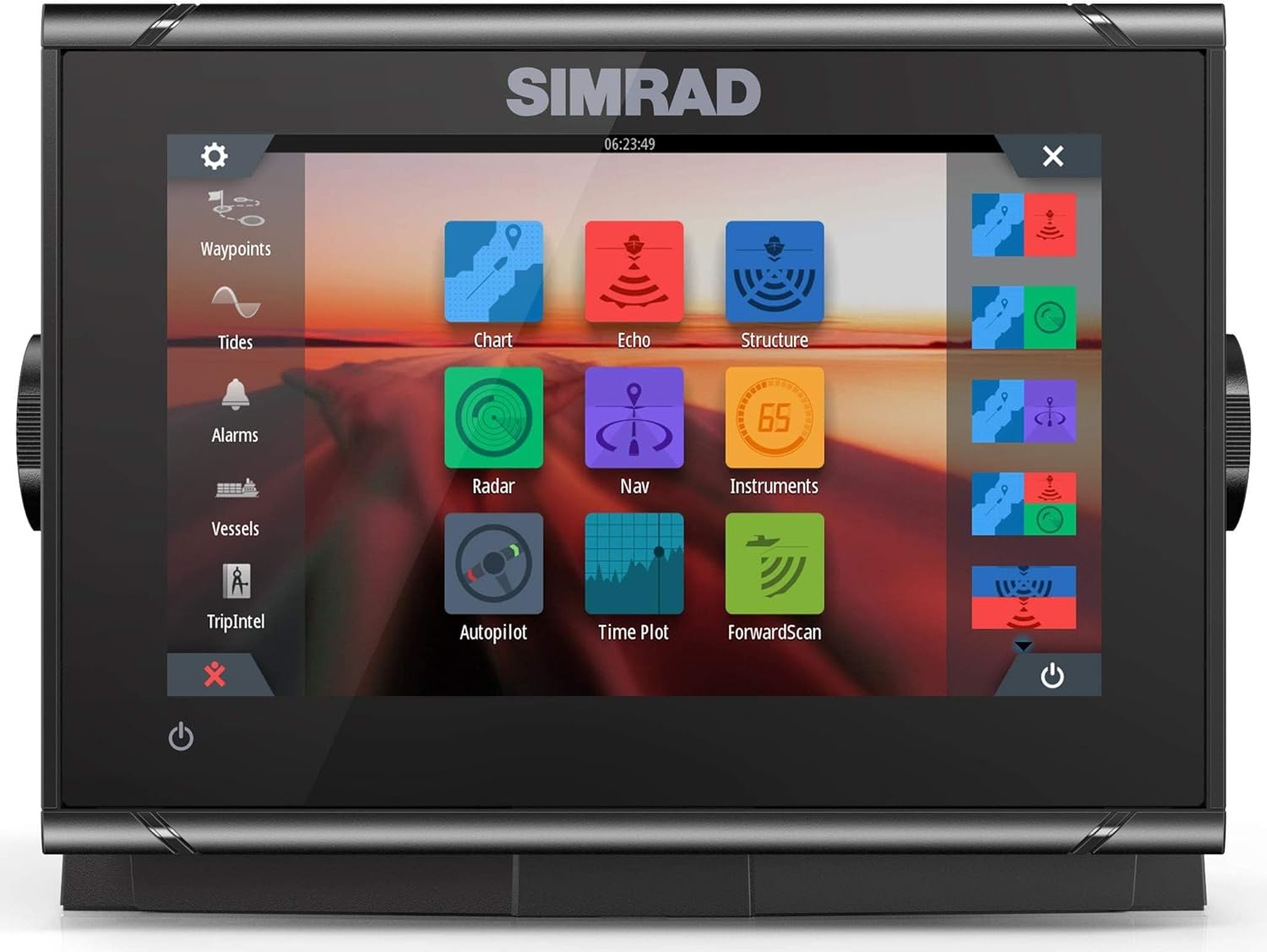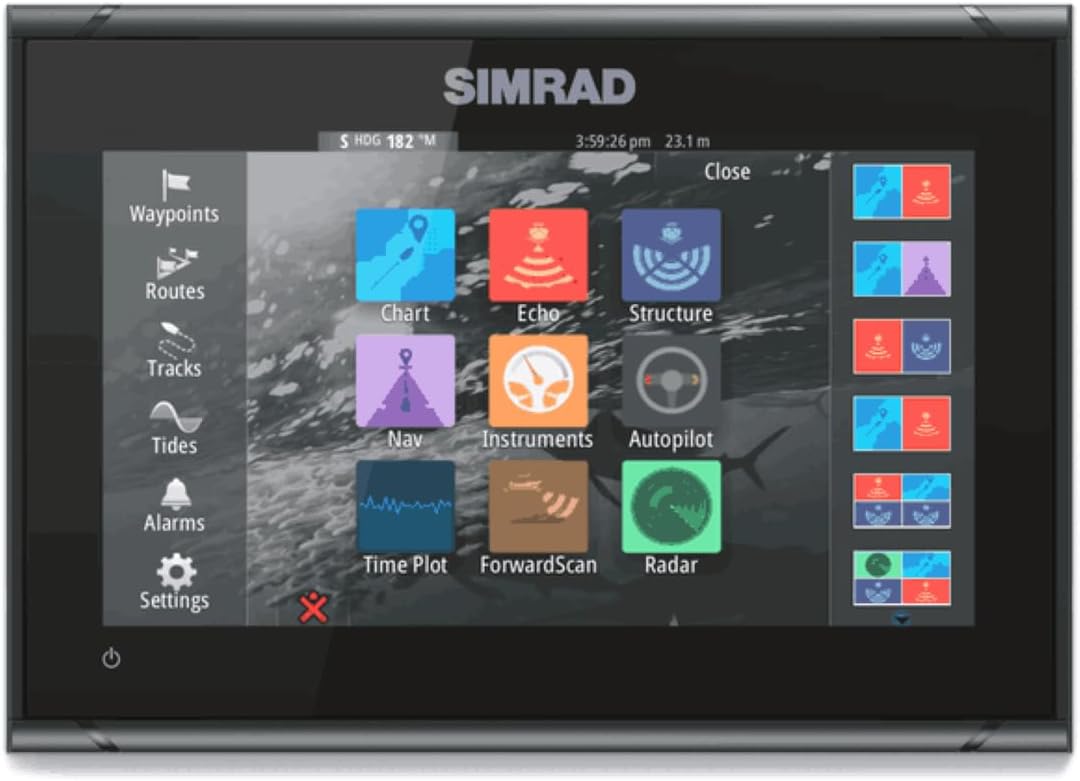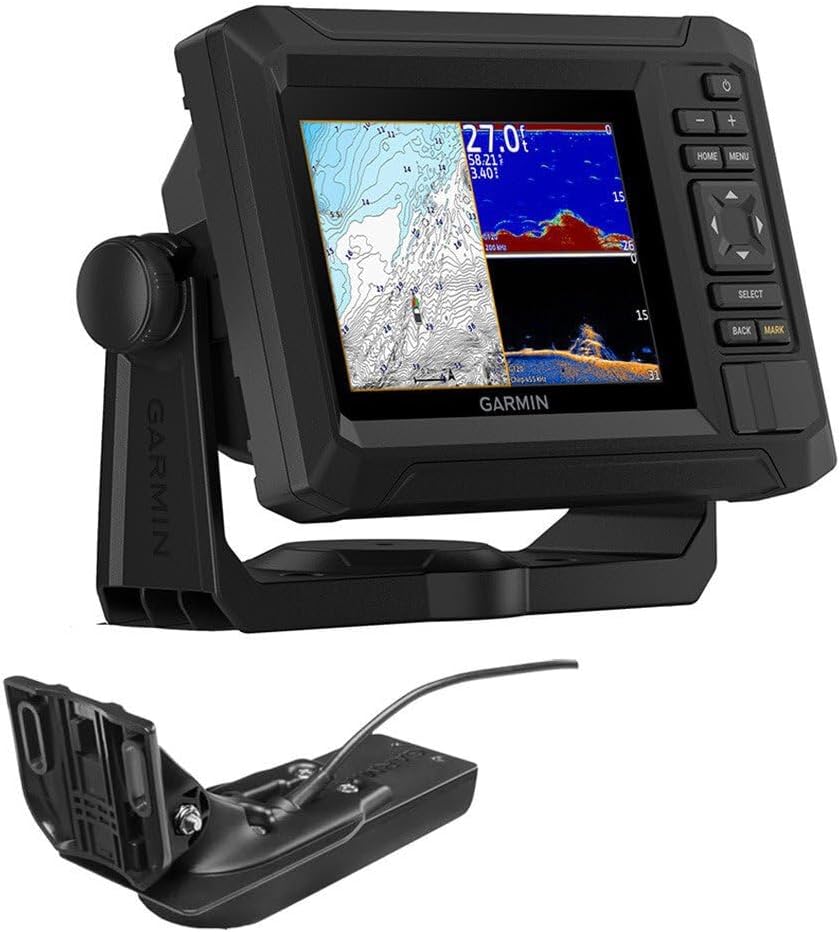Here’s an overview of the Best Marine Gps that we’ll explore today:
Top Pick
Garmin GPSMAP 79sc |
||
Best Quality
Garmin GPS 73 |
||
Simrad GO Chartplotter |
||
Simrad GO Chartplotter |
||
Garmin ECHOMAP UHD2 54CV Chartplotter/Fishfinder with US Coastal Maps |
Marine GPS systems are essential for safe navigation, precise fishing, and efficient route planning on the water. In 2025, the best models balance rugged durability, accurate charting, integrated sonar and radar capabilities, and easy data sharing across devices. To deliver a fair, consumer-focused assessment, I evaluated each unit for display quality, navigation features, sonar/radar integration, battery life or power efficiency (where applicable), ease of use, app and data ecosystem, expandability with transducers and NMEA 2000 networks, and overall value at its price point. The following five products represent a spectrum from compact handhelds to full-function multi-function displays (MFDs) with charting, sonar, and radar capabilities. The price range covered spans from $179.99 to $999.00, with Garmin and Simrad as the represented brands.
1. Garmin GPSMAP 79sc
- Brand: Garmin
- Manufacturer: Garmin
Garmin GPSMAP 79sc is a rugged, floating handheld marine GPS designed for harsh conditions and portability. It ships preloaded with BlueChart g3 coastal charts and offers multi-constellation satellite reception (GPS, GLONASS, Beidou, Galileo, QZSS, SBAS), a built-in 3-axis compass, barometric altimeter, and a long battery life rated up to 20 hours in GPS mode. The device supports up to 10,000 waypoints, 250 routes, and 300 fit activities, making it a strong option for backcountry or shore-lead fishing trips where a primary chartplotter isn’t practical.
In real-world use, the GPSMAP 79sc excels as a trusted backup or auxiliary navigation tool. The floatable design reduces the risk of loss overboard, and the scratch-resistant display ensures legibility in bright sun. The combination of GPS, GLONASS, Beidou, Galileo, and other satellites improves fix reliability in challenging skies or near shorelines with obstructions. However, as a handheld unit with a 6-inch screen, it lacks a dedicated radar, live sonar, or networked chart sharing capabilities found in larger MFDs. Its strength lies in portability, rugged reliability, and extensive memory for waypoint-driven trips.
Pros
- Rugged, floatable design reduces loss risk
- Preloaded BlueChart g3 coastal charts
- Multi-constellation satellite support enhances fix reliability
- Large internal memory for waypoints and routes
- 3-axis compass and barometric altimeter aid navigation
Cons
- No built-in sonar, radar, or chart sharing capability
- 6-inch display may feel small for complex charting
- IPX6 unit-level water resistance; not fully submersible
2. Garmin GPS 73
- Brand: Garmin
- Manufacturer: Garmin
Garmin GPS 73 is an economical 2.6-inch handheld with SailAssist features, extended battery life on 2 AA batteries, and practical marine utilities such as MOB alerts, anchor drift warnings, and route planning. It stores up to 1,000 waypoints and 100 tracks, and adds sailing-oriented conveniences like virtual starting line, countdown timers, speed history, and tack assist. Its compact form factor makes it ideal as a secondary navigation tool or as a primary device for smaller craft where space and budget are at a premium.
The GPS 73 shines in simple, reliable marine tasks and long-duration outings where easy-to-use controls trump feature depth. Its 18+ hour runtime on AA batteries is a notable advantage for multi-day trips. However, the device relies on basic mapping (Nautical map type) and lacks built-in CHIRP sonar, radar, or network connectivity beyond Bluetooth and USB. It serves well as a backup plotter or budget-first option for sailors and day-boaters who need dependable wayfinding without the complexity of an MFD.
Pros
- Long battery life with AA batteries
- SailAssist features tailored for sailing scenarios
- Compact, rugged, and inexpensive
- High waypoint and track storage for its class
- Easy-to-use interface with backlit buttons
Cons
- Limited charting depth and no built-in sonar or radar
- Small screen may hinder complex chart viewing
- Requires separate or complementary displays for full functionality
3. Simrad GO Chartplotter
- Brand: Simrad
- Manufacturer: Simrad
Simrad GO9 XSE represents a full-function 9-inch multifunction display with built-in GPS, echosounder, and optional radar integration. It ships with an Active Imaging 3-in-1 transducer (CHIRP, SideScan, DownScan) and a preloaded C-MAP Discover chart card, offering expansive US/Canada coverage with high-resolution bathymetry and tide data. The GO9 XSE supports NMEA 2000 connectivity, smartphone mirroring, and robust network capabilities, making it a versatile core unit for sportfishing boats and cruisers that demand both navigation and fish-finding capabilities.
In practice, the GO9 XSE delivers crisp sonar imagery and flexible expandability. The Active Imaging transducer provides detailed structure visualization, while C-MAP Discover charts supply reliable inland and coastal coverage. Built-in Wi-Fi and NMEA 2000 support enable data sharing and integration with other devices on the boat. The main trade-off is that this is a higher-cost, single-display solution; for larger boats or those needing multiple displays, you may want additional MFDs or external radars. Still, its performance in sonar imaging and charting makes it a strong core system for serious anglers.
Pros
- High-quality Active Imaging 3-in-1 transducer
- C-MAP Discover chart coverage with bathymetry
- Radar-ready and NMEA 2000 connectivity
- 9-inch bright touchscreen display with touch controls
- Smartphone mirroring and data sharing features
Cons
- Premium price point
- Single-display configuration may require expansion for larger boats
- Transducer adds cost and installation complexity
4. Simrad GO Chartplotter
- Brand: Simrad
- Manufacturer: Simrad
This Simrad GO9 XSE bundle features a 9-inch MFD, 83/200 kHz transom-mount transducer, Wi-Fi, Bluetooth, and radar-ready architecture. It includes a C-MAP Discover card, gimbal bracket, sun cover, and power cable. The unit emphasizes integration across sensors—GPS, echo sounder with CHIRP, SideScan, and DownScan—paired with radar readiness for safer navigation and enhanced situational awareness on the water.
With the GO9 XSE bundle, you benefit from an all-in-one package that simplifies installation while delivering strong core capabilities. The radar-ready design, combined with built-in Wi-Fi for chart updates and sharing between devices, makes it ideal for sailors and anglers who need a capable, networked solution without shopping for multiple components separately. The downsides include a higher upfront price and the need for additional sensors if you want full radar or extended network expansion on larger vessels.
Pros
- Comprehensive 9-inch MFD with built-in echolocation
- Radar-ready and broad connectivity (NMEA 2000, Wi-Fi, Bluetooth)
- Preloaded C-MAP Discover card for US/Canada
- SideScan and DownScan plus CHIRP for detailed imaging
- Bundle simplifies installation and expansion
Cons
- Higher price point
- Requires additional sensors for full radar capability on some boats
- Transducer and radar options add to total cost
5. Garmin ECHOMAP UHD2 54CV Chartplotter/Fishfinder with US Coastal Maps
- Brand: Garmin
- Manufacturer: Garmin
Garmin ECHOMAP UHD2 54CV is a compact 5-inch chartplotter and fishfinder that blends CHIRP traditional sonar with ClearVü scanning sonar. It ships with US coastal maps and a GT20-TM transducer, offering high-contrast color palettes and a bright display for daylight readability. Wi-Fi connectivity enables chart sharing across compatible Garmin plotters, and the device integrates LakeVü g3 and BlueChart mapping with Navionics data, delivering robust inland and coastal coverage in a compact form factor.
Performance-wise, the UHD2 54CV targets users who want a small but capable display that can double as a secondary unit or a primary unit on smaller boats. The dual-sonar capability helps with target separation and structure identification, while the ability to share data with other Garmin devices enhances multi-display ecosystems. Limitations include a smaller screen size that constrains detailed chart viewing and fewer advanced features compared to larger GO-series or Garmin Echomap UHD2 models with bigger screens and more extensive networking options.
Pros
- Compact 5-inch display with CHIRP and ClearVü sonar
- Includes US coastal maps and Navionics data integration
- Wi-Fi for data sharing across Garmin ecosystem
- GT20-TM transducer included for versatile sonar
- Budget-friendly within Garmin Echomaps
Cons
- Small screen limits chart clarity for complex layouts
- Fewer advanced networking features than larger models
- Limited expandability without adding more units
Frequently Asked Questions
We’ve compiled answers to the most common questions about marine gpss to help you make an informed decision.
Conclusion
This selection showcases a spectrum from compact handhelds to feature-rich MFDs.
Your choice should hinge on vessel size, required integration level (sonar, radar, NMEA networks), and budget.
For serious anglers and boats that demand radar and advanced imaging, the Simrad GO9 XSE series delivers the most comprehensive capability, while Garmin’s UHD2 54CV provides solid performance in a smaller footprint. For budget-conscious sailors, the GPS 73 remains a practical option as a secondary device or entry point into marine navigation..
